Miniscule mugwort flowers are this extremely invasive plant’s last—and very effective—hurrah before frost arrives and turns the tall, woody stems of Artemisia vulgaris into brittle, dry sticks. Over the growing year, mugwort has evolved from early spring’s feathery silver shoots, to tenderly green stems and wide leaves, before culminating in statuesque woody branches festooned with narrow leaves and tiny, inconspicuous flowers and seeds. Now is the time to jump on those long mugwort stems and to collect and dry this wild herb’s aromatic flowers and seeds for winter cooking.
The flavor of mugwort combines this wormwood’s desirable bitterness with sage-like earthiness, making it a very good pairing for the sweetness of fall fruit, winter squash, and the root vegetables. here’s how to dr…
Miniscule mugwort flowers are this extremely invasive plant’s last—and very effective—hurrah before frost arrives and turns the tall, woody stems of Artemisia vulgaris into brittle, dry sticks. Over the growing year, mugwort has evolved from early spring’s feathery silver shoots, to tenderly green stems and wide leaves, before culminating in statuesque woody branches festooned with narrow leaves and tiny, inconspicuous flowers and seeds. Now is the time to jump on those long mugwort stems and to collect and dry this wild herb’s aromatic flowers and seeds for winter cooking.
The flavor of mugwort combines this wormwood’s desirable bitterness with sage-like earthiness, making it a very good pairing for the sweetness of fall fruit, winter squash, and the root vegetables. here’s how to dry this versatile herb—plus a recipe for mugwort roast potatoes.
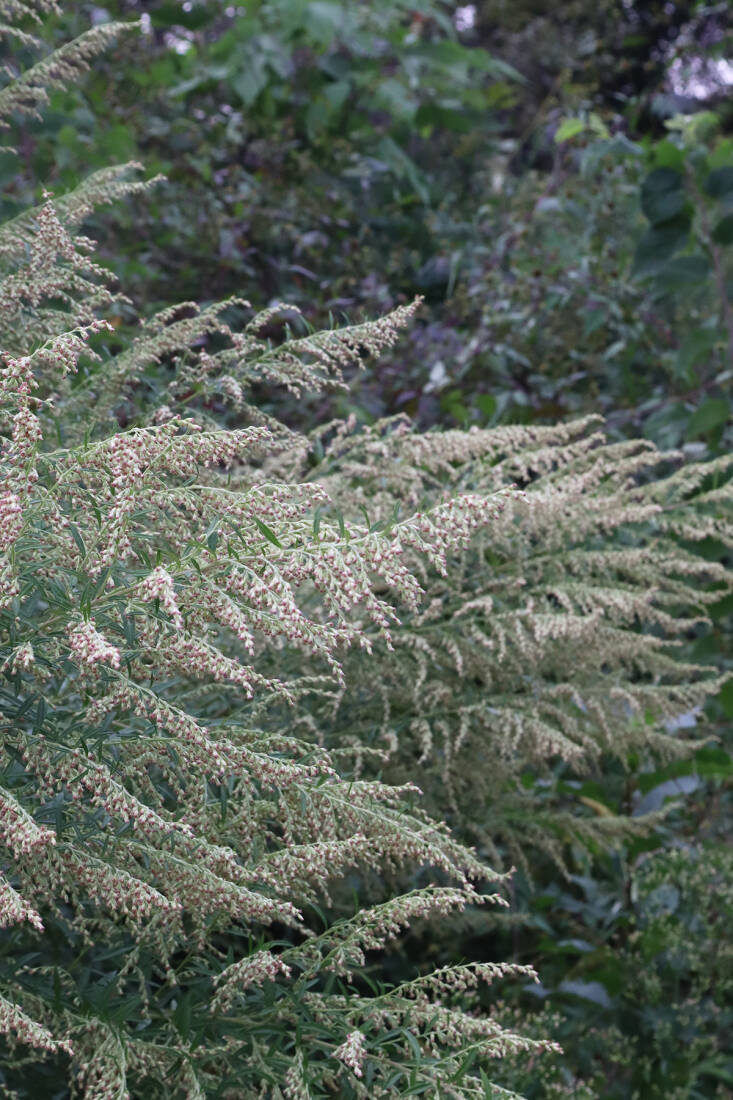 Above: Tall, and feathery mugwort flowers at the start of the growing season.
Above: Tall, and feathery mugwort flowers at the start of the growing season.
Those mugwort flowers set and shed seeds by the thousands. These germinate readily the following season. Mugwort is a perennial, so the seeds are only half of its survival mechanism, since the plant’s rhizomes keep spreading under the soil.
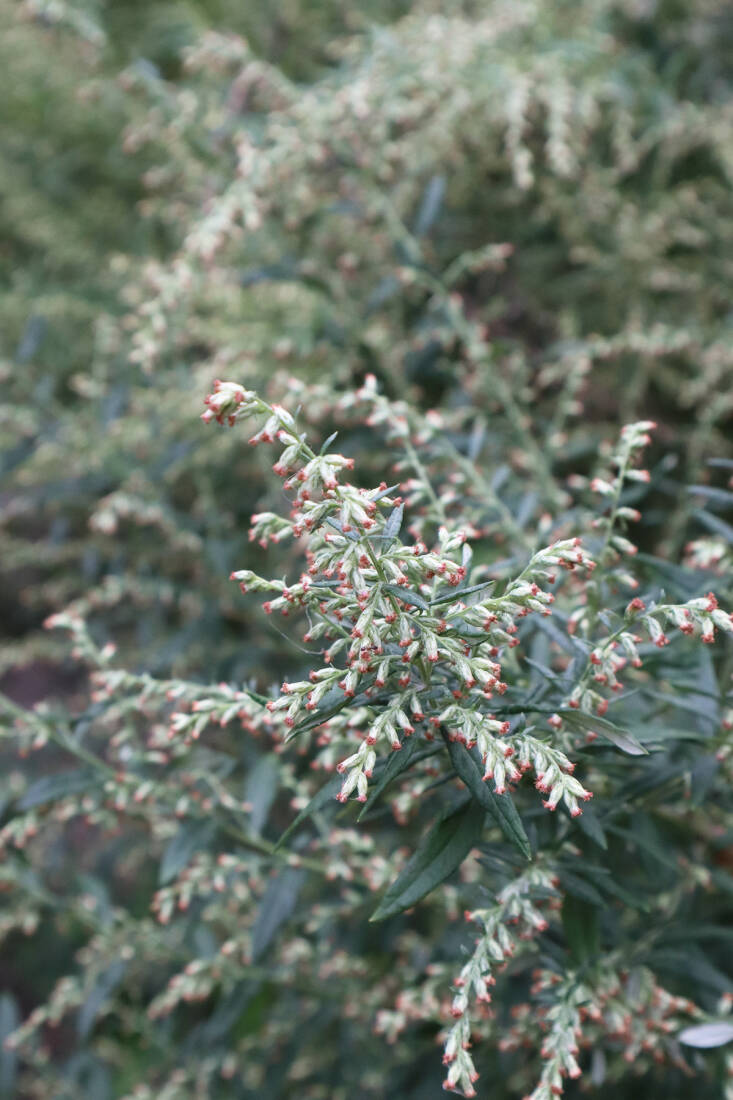 Above: Mugwort flowers are tiny.
Above: Mugwort flowers are tiny.  Above: The cut flower industry has not yet discovered mugwort flowers—they make an excellent and airy filler.
Above: The cut flower industry has not yet discovered mugwort flowers—they make an excellent and airy filler. 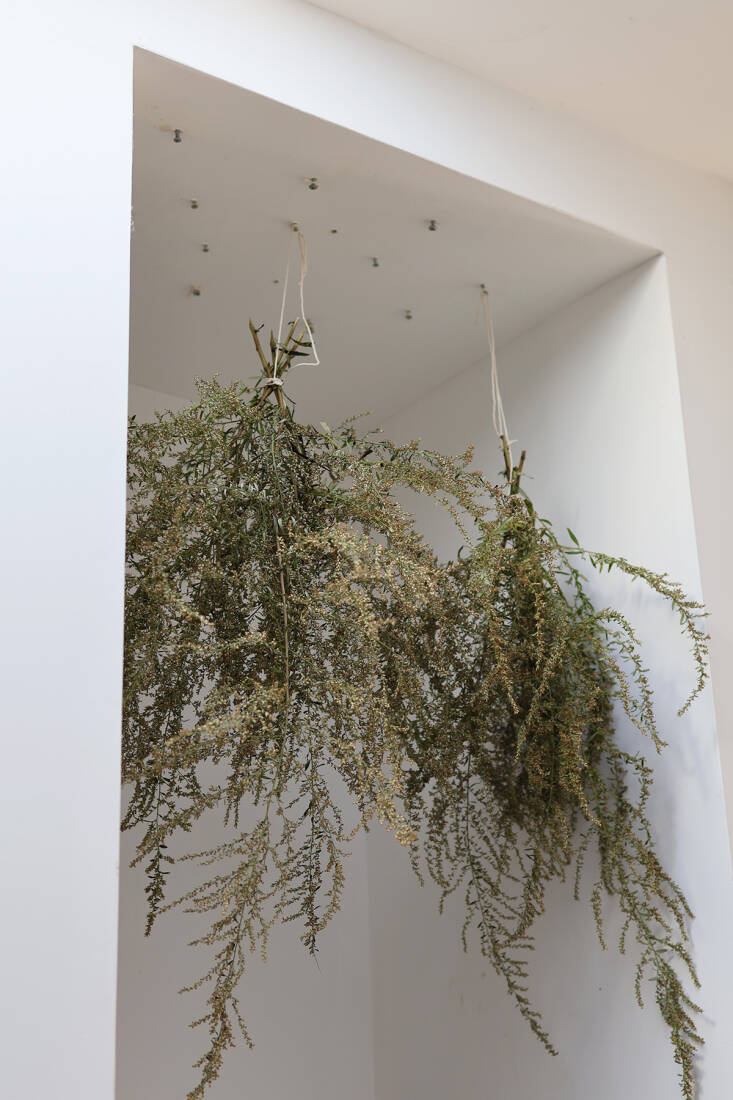 Above: Hanging bunches of mugwort dries them quickly.
Above: Hanging bunches of mugwort dries them quickly.
To dry mugwort, gather bunches and suspend them from the ceiling, or simply spread them over a clean surface indoors. When the leaves and the mugwort flowers feel brittle and crisp, they are ready to be stripped and stored in spice jars. Run your fingers from the tip of each branchlet to the base, counter to the direction of leaf-growth—this quickly strips off all the foliage and flowers. Pack them in an airtight jar.
 Above: Dried mugwort flowers and leaves.
Above: Dried mugwort flowers and leaves.  Above: Honeynut squash about to be roasted with dried mugwort flowers.
Above: Honeynut squash about to be roasted with dried mugwort flowers.  Above: The sweetness of the squash is balanced by the sage-y bitterness of the mugwort flowers.
Above: The sweetness of the squash is balanced by the sage-y bitterness of the mugwort flowers. 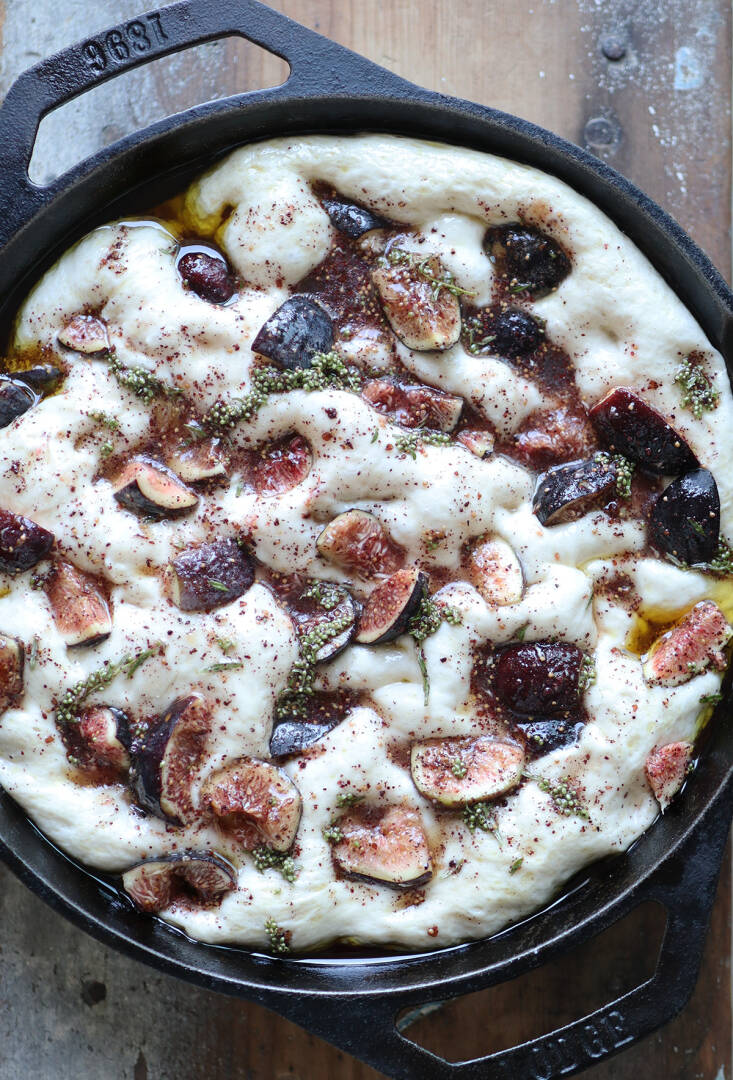 Above: A seasonal focaccia combines sweet figs and mugwort flowers. (Here is the recipe for my no-knead focaccia.)
Above: A seasonal focaccia combines sweet figs and mugwort flowers. (Here is the recipe for my no-knead focaccia.)
Mugwort flowers amplify and balance the sweet flavors of winter squash, carrots, parsnips, and onion. If you roast fall fruit as a side dish for a savory entrée, add some mugwort to pears, apples, figs, and grapes. In simmered and soupy dishes, mugwort pairs very well with dry beans and lentils.
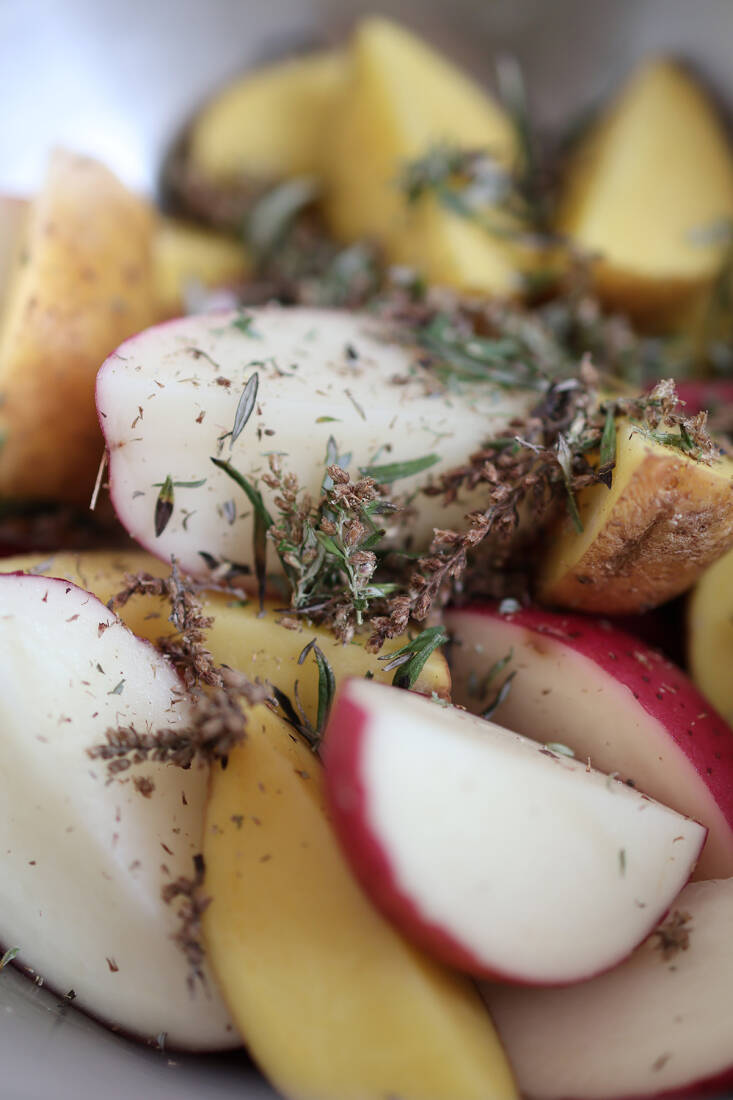 Above: A medley of potatoes with a flurry of dried mugwort flowers for seasoning.
Above: A medley of potatoes with a flurry of dried mugwort flowers for seasoning. 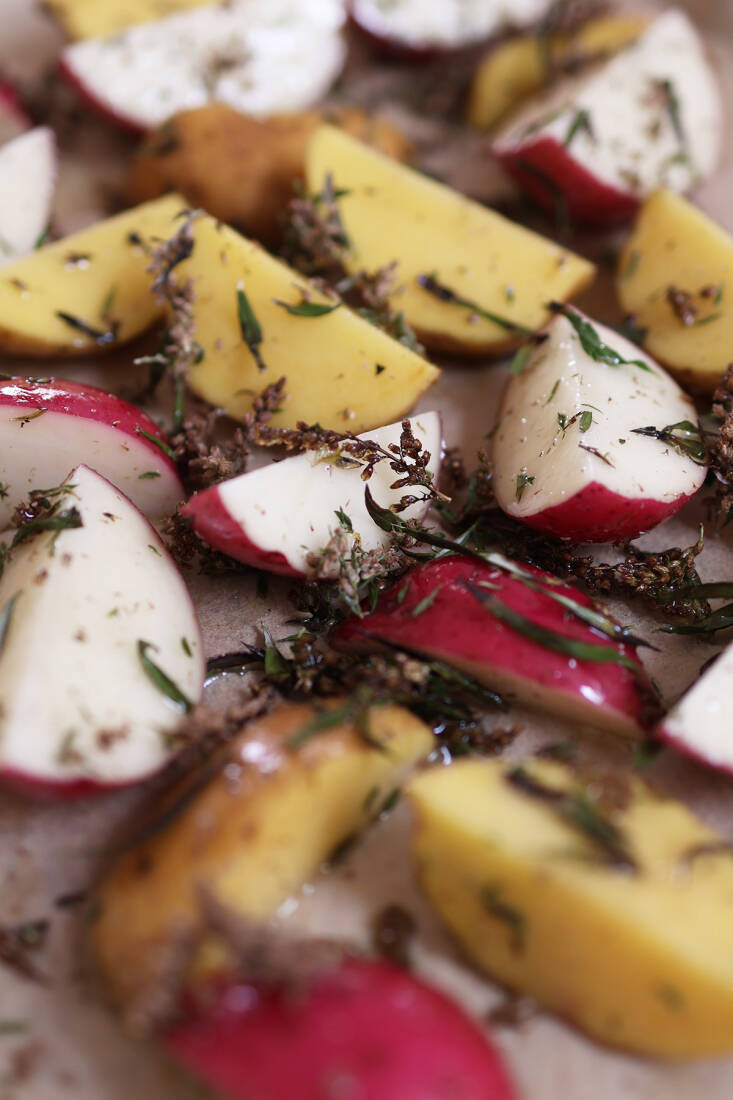 Above: The potatoes are tossed in a bowl with avocado oil, salt and mugwort.
Above: The potatoes are tossed in a bowl with avocado oil, salt and mugwort.  Above: The mugwort potatoes roast on a sheetpan for 40 minutes at 400°F.
Above: The mugwort potatoes roast on a sheetpan for 40 minutes at 400°F. 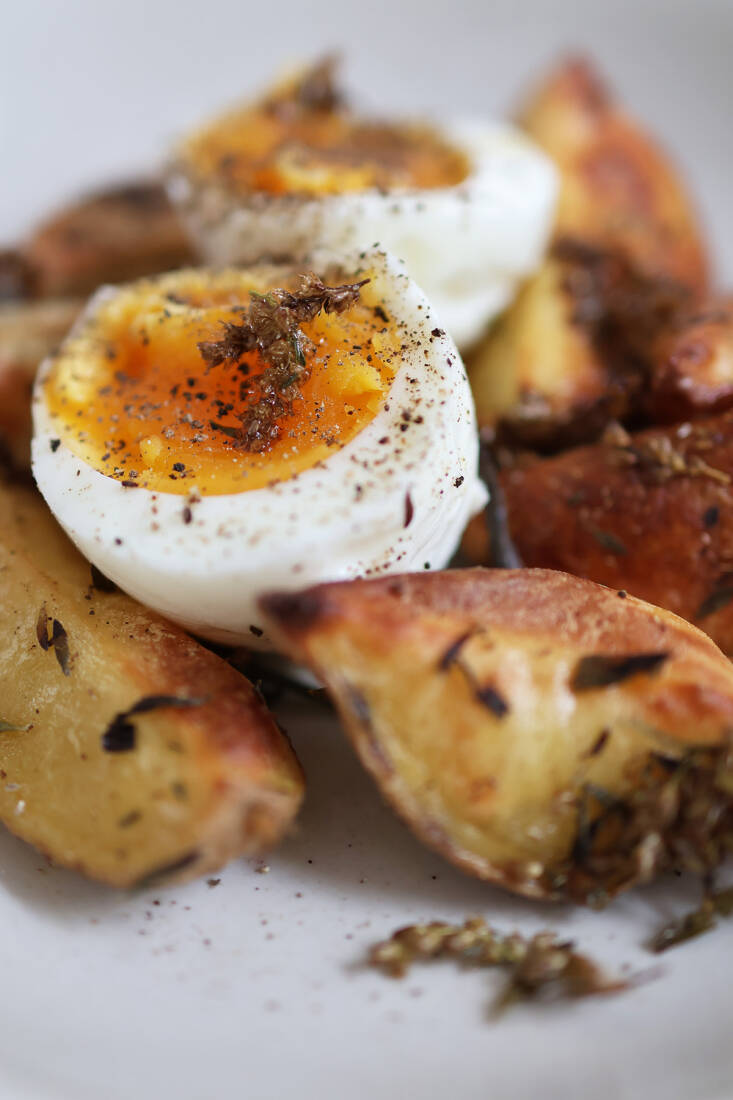 Above: A 9-minute egg tops crunchy mugwort roast potatoes.
Above: A 9-minute egg tops crunchy mugwort roast potatoes.
Roast Potatoes with Mugwort Flowers
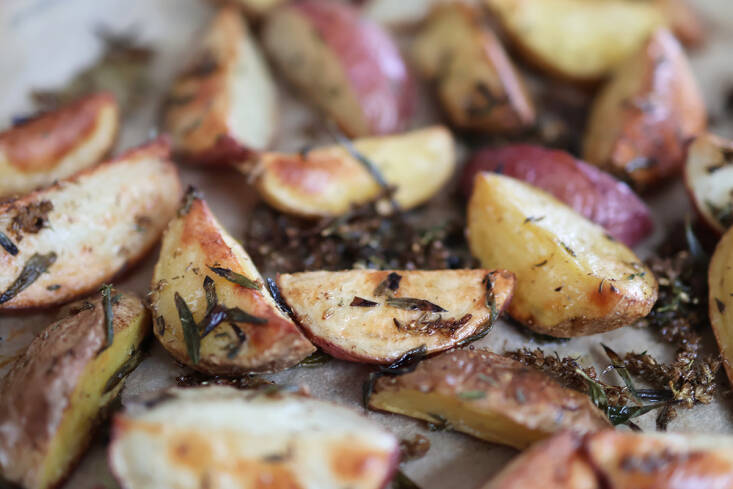 Above: Potatoes roasted with a mugwort flowers.
Above: Potatoes roasted with a mugwort flowers.
Serves 4 as a side (2 as an entrée)
A classic side dish, roast potatoes can also be standalone and very respectable meal (serve them with a crunchy salad of greens or radicchio and apple). I usually use avocado oil for its higher smoke point, but if you are not vegetarian and have some duck fat lurking, that combination is spectacular.
- 1 1/2 lbs potatoes, cut into wedges or quarters (halve if small)
- 1/4 cup avocado oil
- 1/8 teaspoon salt
- 2 Tablespoons dried mugwort flowers and leaves
Preheat the oven to 400°F.
Line a sheet pan with baking parchment.
In a bowl combine the potatoes with the oil, salt and mugwort flowers. Toss until combined. Spread the potatoes out on the baking sheet and roast for 40 minutes, or until they are turning dark golden (shake the pan halfway though to turn some of the potatoes).
Serve at once.
(Visited 16 times, 16 visits today)